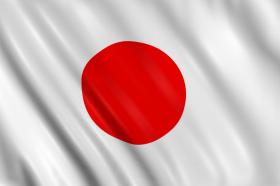Chairman and CEO, Renault-Nissan BV
Remembering the 2011 Japan earthquake and tsunami

It is now a year since the tragic events of March 11, 2011, one of the darkest days in Japan’s recent history and a crisis that tested the spirit of the nation.
The magnitude-9 earthquake that struck the Tohoku region of northeast Japan, and the devastating tsunami that followed, left at least 20,000 people dead or missing, and among those casualties were five of our employees and 17 family members of staff.
Our Iwaki plant was some distance from the worst devastation and thankfully spared from loss of life, but still badly damaged.
When I visited the Iwaki factory in the days following the earthquake there were huge cracks in the floor and machinery had been dislocated.
All production lines had stopped and recovery appeared to be far in the distance.
However, General Manager Nobuhiro Ozawa and his team promised me they would soon bring the Iwaki factory back to life.
And, given Iwaki's proximity to the Fukushima Daiichi nuclear power plant, Ozawa-san and his staff could have thrown up their hands and waited for the difficult hour to pass.
But in the local dialect that is not their “gambappe” spirit, nor the way of Japan.
Ozawa-san was one of many heroes we recognized within Nissan after the disaster. Assisted by staff from other Nissan plants and from our parts suppliers, the Iwaki team set to work with a bravery and resilience that I found both moving and humbling.
When I returned on May 17, 2011 – barely two months after the disasters - I saw the miraculous result of their efforts.
The plant had returned to nearly full operations, and during that visit staff shared with me their experiences during the crisis, and the aftershocks and a subsequent earthquake that hit a few weeks later. I realized their tremendous contribution to the recovery of Nissan, and in a symbolic way, to all Japan.
We also remember the same earthquake caused severe damage to our Tochigi plant, where everyone also worked diligently for the swift restoration of production.
Yet, one year after the March disasters, we should consider not only what has been done to facilitate recovery, but what more can be done to ensure full assistance for those who were in harm's way.
Looking at specifics, there is still much work to do.
At the end of February, little more than half of the 6.7 trillion yen budgeted for Tohoku's reconstruction had been spent, while less than 20 percent of money allocated for road, housing and school reconstruction had been used. Through whatever means necessary, we must accelerate the pace of reconstruction.
Hundreds of thousands of people were made homeless by the disasters, and in Miyagi prefecture alone, thousands still live in temporary homes or shelters, many of them elderly. This winter has been unusually cold and it has been difficult to just provide adequate heating.
Thus, reconstruction efforts and assistance must not slow or stumble because the challenges still facing Tohoku are immense. One of the greatest is employment.
Well before the events of last March, rural Japan was already afflicted by depopulation and the hollowing out of local industry. Tohoku industries such as farming and fishing have been crippled by the natural and man-made disasters.
Some 720 billion yen in budgetary subsidies has been set aside for businesses to help keep jobs, but not even 5 percent of that amount has been claimed so far.
Despite the challenges of the recovery, Tohoku can demonstrate how Japan will rise to meet both sudden disasters such as the earthquake and the longer-term economic and demographic challenges.
At Nissan, we are fully committed both to the recovery of Tohoku and to Japan’s future.
The kanji character chosen in Japan to symbolize the year 2011 was “kizuna”, which can be translated as ties that can bind a family, a nation, or even a company together.
The response to the disasters of one year ago powerfully underscored the strength of those bonds, while this anniversary is a moment to reflect and mourn those who perished, while reaffirming our kizuna ties to those who survived and are still in need.





Post new comment